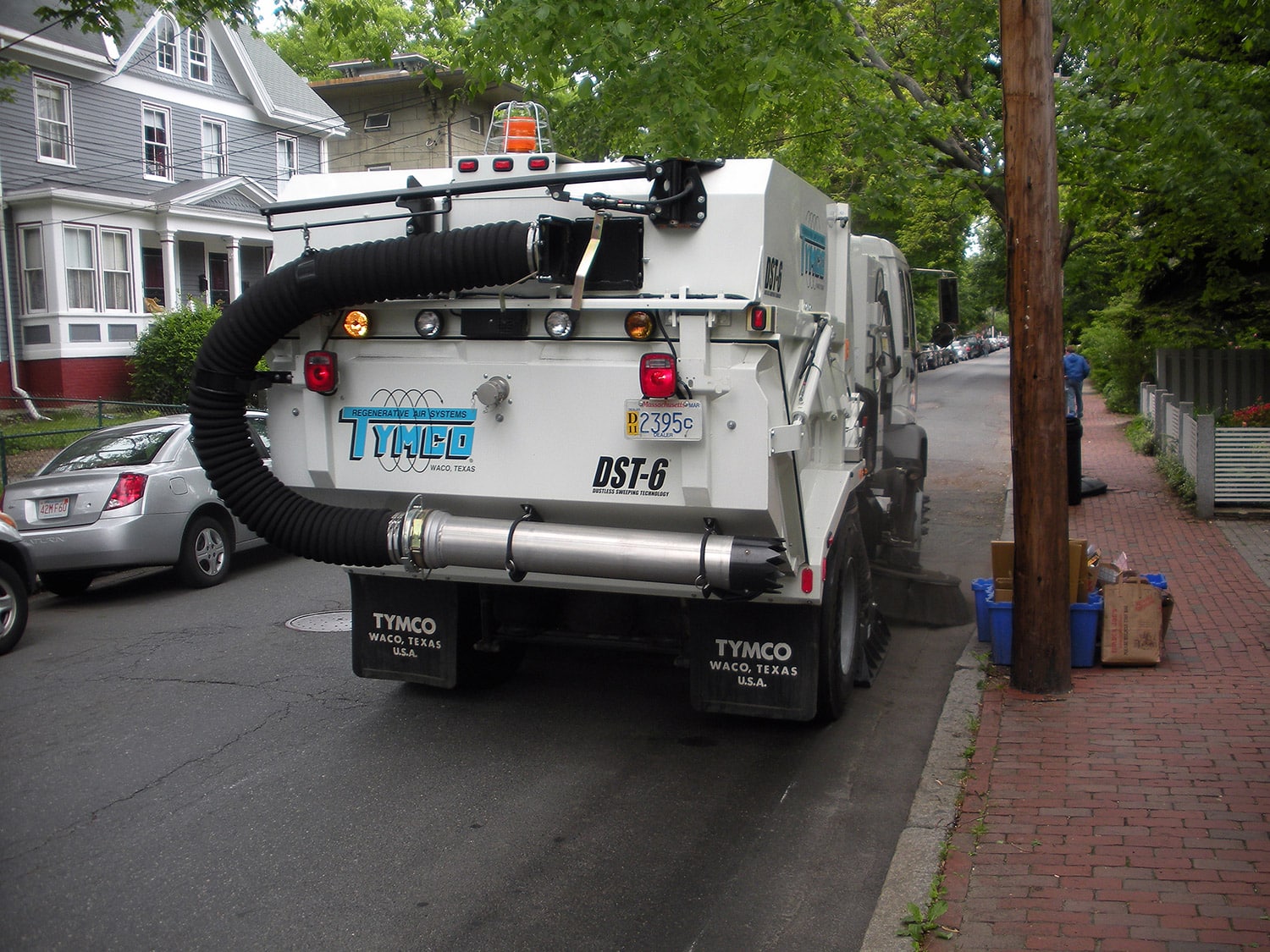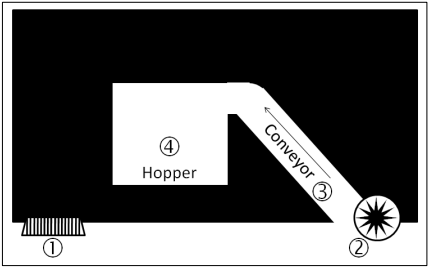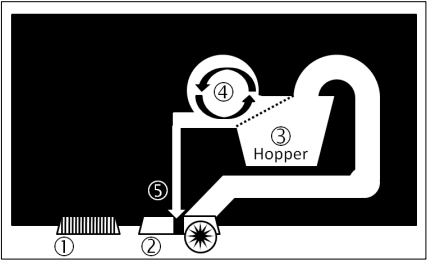Street Dust: Implications for Stormwater and Air Quality, and Environmental Management Through Street Sweeping
Background and Study Objectives
Overview
Street dust represents a source of dual potential risk to stormwater and air quality. It has been well documented that street dust washes into local watersheds and can degrade water quality. Research has also demonstrated that ambient particulate matter (PM10 ), which is associated with adverse health outcomes, can arise from resuspension of accumulated street dust. Furthermore, many contaminants, including metals, are present at higher concentrations in the smallest available particles, which are more likely to be resuspended in air and stormwater runoff. Although street cleaning is listed as a best management practice for stormwater quality by the EPA, data are limited on the critical parameters (technology, environment, usage), which determine the effectiveness of any street cleaning program, particularly in the peer-reviewed literature. The purpose of the present study was to develop a comprehensive understanding of the efficacy of various street cleaning technologies and practices to protect both water quality and public health.

Study Objectives
- Describe street cleaning technologies and their history.
- Critically review and summarize the available data on the effectiveness of various street cleaning technologies and practices for improvement of stormwater and air quality.
- Summarize environmetal regulation in the United States as it relates to street cleaning.
- Describe the characteristics of street dust and sources of contaminants.
- Describe the relevance of street cleaning technologies to ecological and human health risk.
- Make recomendations for future research.
Study Authors
- Steven J. Calvillo, M.E.S., M.B.A. – Marketing & Technical Communications, TYMCO, Inc.
- Bryan W. Brooks, Ph.D. – Distinguished Professor, Environmental Science and Biomedical Studies, Baylor University.
- E. Spencer Williams, Ph.D., DABT – Former Research Assistant Professor, Environmental Health Science Program, Baylor University. Currently a Toxicologist at NASA.
Article Download
This article is an adaptation of Steven Calvillo’s Master of Environmental Studies (M.E.S.) thesis. It was published in Reviews of Environmental Contamination and Toxicology. Volume 233 (2015). The complete article is available for download at no charge at www.tymco.com/environment/studies-articles.
Street Cleaning Technologies
Mechanical
- Invented in 1843 by Joseph Whitworth in Manchester, England.
- Effective at picking up wet vegetation, coarse sand, and heavy material such as gravel.
- Less efficient at removing finer particles (60 μm and smaller) left behind in cracks and uneven pavement.
Process
- A rotating gutter broom directs dirt and debris from the curb into the path of a large rotating cylindrical broom.
- The main broom flicks dirt and debris onto a conveyor.
- The conveyor carries dirt and debris to a hopper.
- The conveyor drops dirt and debris into a hopper.

Vacuum
- Emerged around the 1920s.
- An engine powered fan creates suction.
- Better than mechanical broom sweepers at removing finer particulates.
- Exhausted air can create ambient Particulate Matter pollution.
- Windrow broom has the same inherent problems and mechanical broom.
Process
- A rotating gutter broom directs dirt and debris from the curb into the path of the vacuum nozzle.
- A windrow broom is often used to direct dirt debris into the path of the vacuum nozzle.
- The debris-laden air stream is pulled into a hopper, at the opposite side of the suction inlet where the air loses velocity and the larger debris drops to the bottom.
- Dirt and debris settle in hopper and lighter debris is blocked by a screen.
- Air is exhausted from hopper.

Regenerative Air
- Invented by B.W. Young in Waco, Texas in the mid-1960s.
- Most efficient at picking up finer particles.
- Able to penetrate cracks and inperfections on pavement.
Process
- A rotating gutter broom directs dirt and debris from the curb into the path of the pick-up head.
- Within the pick-up head, a blast of air dislodges and suspends dirt and debris.
- A broom within the pick-up head is sometimes used to dislodge stuck-on debris.
- The debris-laden air stream is pulled into a hopper, at the opposite side of the suction inlet where the air loses velocity and the larger debris drops to the bottom.
- Dirt passes through a centrifugal dust separator.
- Clean air returns to the blast orifice of the pick-up head.

High-Efficiency Sweepers
- Emerged in the 1980s.
- Any of the three main sweeper types designed to control the loss of fugitive dust smaller than 60 μm with the use of media particulate filters.
Sources of Contaminants
- Engine exhaust emissions
- Brake dust
- Vehicle fluids
- Tire wear
- Road wear
- Structural wear
- Pesticides
- Fertilizers
- Industrial emissions
- Animal waste
Contaminants
- Metals – Aluminum, cadmium, chromium, copper, lead, nickel, and zinc
- Organics – Polycyclic Aromatic Hydrocarbons (PAHs), organic compounds (VOCs), phthalates, dioxins, furans, pesticides
- Nutrients – Nitrogen and phosphorus
- Particulates – PM2.5 and PM10
Conclusions
- Street dust contains significant concentrations contaminants that have the potential to negatively impact human and ecological health.
- Regenerative air sweepers appear to be most effective at collecting the smallest particles and preventing reentrainment of particulate matter.
-
Several variables make it difficult to compare various sweeper studies, including:
- Differences in test protocols and pickup material
- Customization of sweeper settings, options, and conditions
- Street conditions, pavement type, crown, slope, existence of curb and gutter
- Operator error, sweeping speeds, time of year/weather, local climate
- No standardized protocol for assessing the effectiveness of street cleaning presently exists.
Questions and Commments: Please visit www.tymco.com/contact
